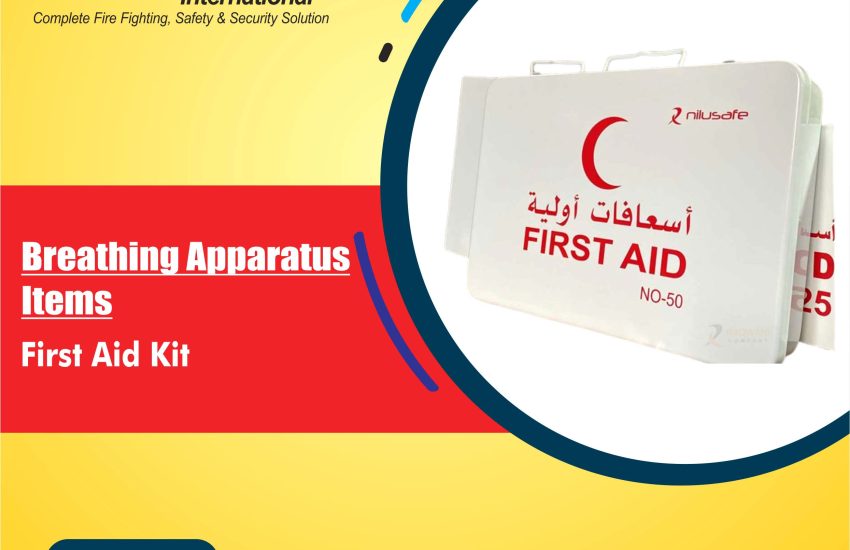First Aid Kit is an essential tool for handling medical emergencies and providing immediate care in situations ranging from minor injuries to life-threatening incidents. Whether at home, work, or while traveling, having a well-stocked and organized first aid kit ensures that you are always prepared. This comprehensive guide will cover everything you need to know about First Aid Kits, including their uses, essential items, and the importance of keeping one readily available.
What is a First Aid Kit?
A First Aid Kit is a collection of supplies and equipment used to provide medical treatment for injuries or illnesses. It’s designed to help individuals manage medical emergencies until professional medical help arrives. A typical first aid kit contains a variety of basic medical tools, from bandages and antiseptics to tools for CPR and wound care.
Why is a First Aid Kit Important?
- Immediate Medical Attention: In emergencies, quick access to medical supplies can reduce the severity of injuries and prevent further complications.
- Preparedness: Having a well-stocked First Aid Kit ensures that you are ready to handle minor injuries or medical issues at any time.
- Peace of Mind: Knowing that you have a First Aid Kit on hand provides comfort and confidence in dealing with unexpected medical situations.
- Reduces Medical Costs: Addressing minor injuries immediately can prevent the need for more expensive medical treatments later on.
Essential Items to Include in a First Aid Kit
A First Aid Kit should be stocked with a variety of essential medical supplies to handle common injuries and health issues. Here’s a list of must-have items for your kit:
- Adhesive Bandages: Useful for covering small cuts, blisters, or abrasions.
- Gauze Pads and Bandages: For dressing larger wounds and controlling bleeding.
- Antiseptic Wipes: To clean wounds and reduce the risk of infection.
- Adhesive Tape: Helps secure bandages or gauze in place.
- Antibiotic Ointment: Helps prevent infection in minor cuts and scrapes.
- Burn Cream or Gel: Provides relief for minor burns and prevents infection.
- Elastic Bandage (e.g., Ace Bandage): Ideal for sprains or strains, providing compression and support.
- Scissors: Used to cut tape, gauze, or clothing in emergency situations.
- Tweezers: Essential for removing splinters, glass, or other small foreign objects.
- Instant Cold Pack: Helps reduce swelling and provides relief from sprains or strains.
- Thermometer: To monitor body temperature and detect signs of fever.
- First Aid Manual: Provides guidance on how to respond to various medical emergencies.
Uses of a First Aid Kit
A First Aid Kit can be used in a wide range of situations. Here are some of the most common uses:
- Treating Minor Injuries: A First Aid box is perfect for addressing small cuts, scrapes, bruises, and burns.
- Handling Medical Emergencies: In the case of more serious injuries such as sprains, fractures, or choking, a first aid kit can provide the necessary tools to stabilize the patient until professional help arrives.
- Managing Allergic Reactions: Some kits include items like antihistamines or epinephrine pens to assist in managing allergic reactions.
- CPR and First Responder Support: Kits often contain CPR masks and gloves for performing life-saving procedures in emergency situations.
- Preventing Infection: Antiseptics, bandages, and ointments in a first aid box help prevent infections by cleaning and covering wounds.
Types of First Aid Kits
Different types of First Aid Kits are designed for various environments and needs. Here are a few common types:
- Home First Aid Kit: These are stocked with supplies for everyday injuries and common illnesses. It’s perfect for treating minor injuries at home.
- Car First Aid Kit: These kits are designed to handle emergencies on the road. They often include items for burns, cuts, and sprains that might occur during travel.
- Workplace First Aid box: These kits are tailored to specific workplace environments, including items for injuries commonly sustained in industrial or office settings.
- Travel First Aid Kit: Compact and portable, these kits include essential items for handling minor injuries and illnesses while traveling.
- Outdoor First Aid Kit: Designed for camping, hiking, and outdoor activities, these kits contain additional tools like insect bite treatment and snakebite kits.
How to Maintain Your First Aid Kit
- Regularly Check Expiry Dates: Some items in your first aid box such as medications or antiseptics, may have expiration dates. Regularly check and replace expired items.
- Restock Supplies: Ensure that you replace any used items to keep your kit fully stocked and ready for emergencies.
- Organize the Kit: Store your first aid supplies in a labeled container or bag. Keeping it organized helps you quickly find what you need in an emergency.
- Review the Contents: Assess whether your kit contains everything necessary for your specific needs. For example, if you have allergies, you might want to add an EpiPen or antihistamines.
Where to Buy a First Aid Kit
You can purchase First Aid Kits from a variety of sources, including online retailers, pharmacies, and stores that sell emergency preparedness products. Popular platforms such as Amazon, Walmart, and eBay offer a wide range of kits for different needs and budgets. You can also find specialized first aid kits tailored to specific environments, such as home, travel, or workplace.
Conclusion
A First Aid box is a vital tool for managing emergencies, providing immediate care, and preventing further harm until medical professionals arrive. By keeping a well-stocked and organized first aid box, you ensure that you’re prepared for any medical situation, whether it’s a minor injury or a life-threatening emergency. Whether at home, work, or on the go, always make sure that your first aid box is easily accessible, fully stocked, and up to date.


